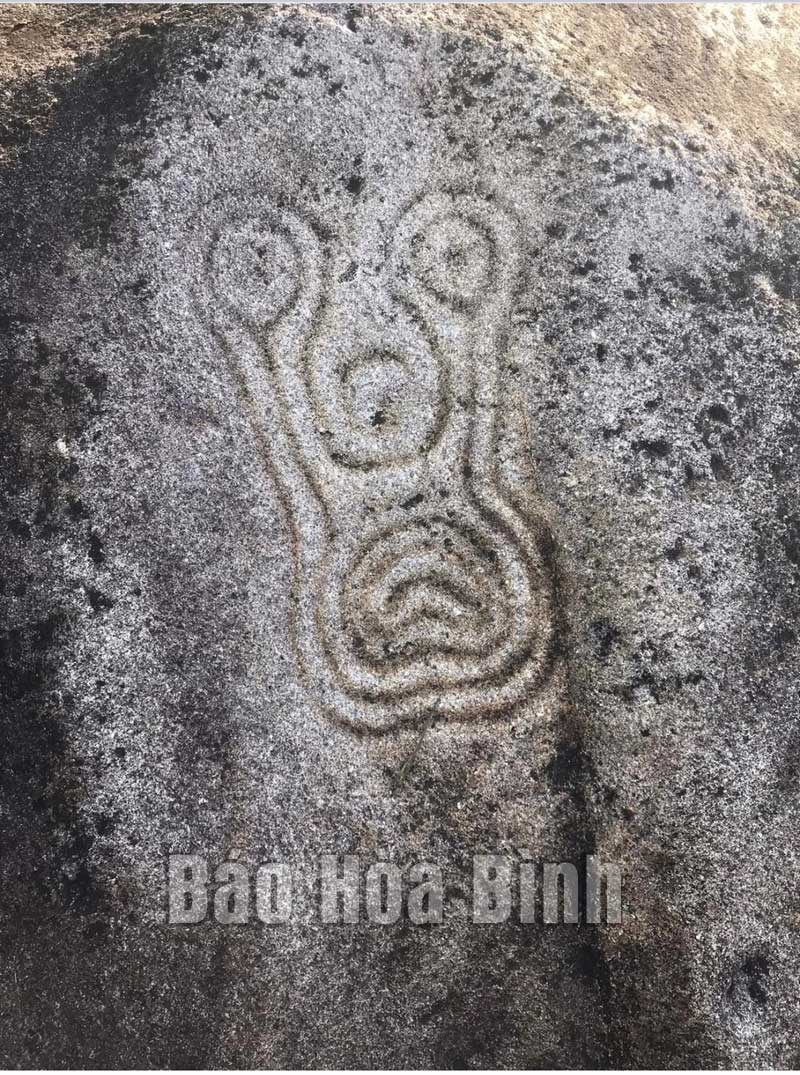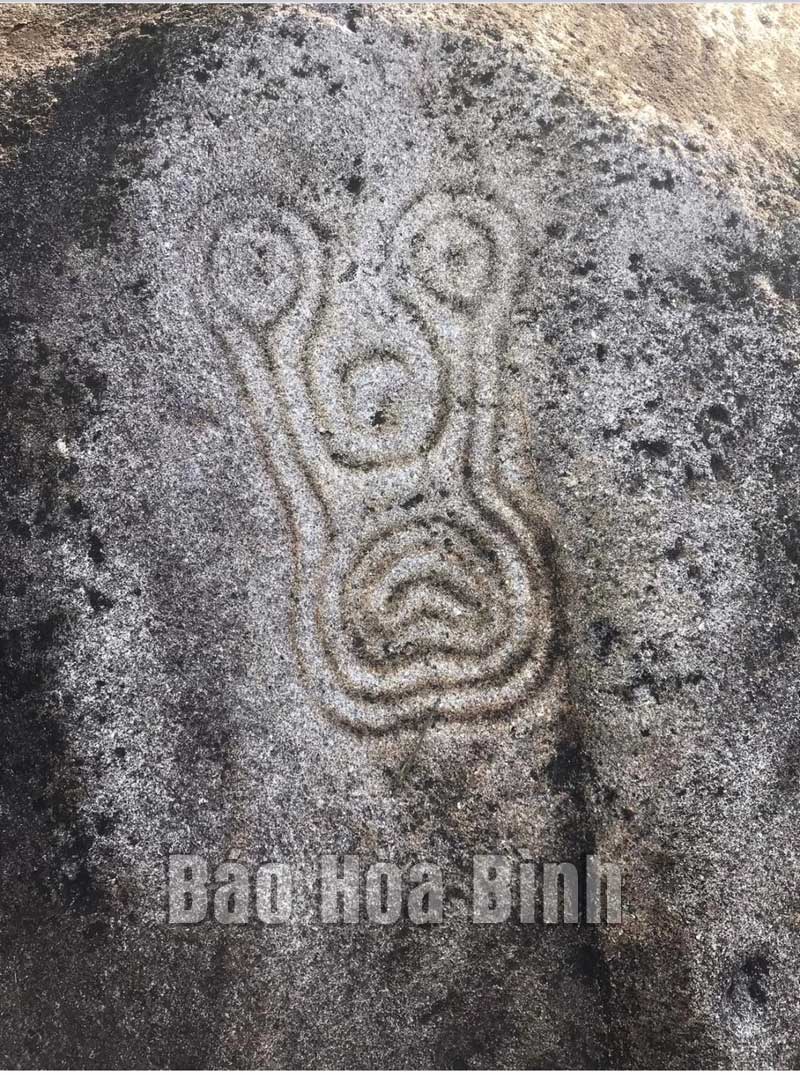
(HBO) – The Hoa Binh provincial Department of Culture, Sports and Tourism has coordinated with the Centre for Southeast Asian Prehistoric Studies to conduct a study of stone carvings on Co Spring in My Thanh commune, Lac Son district. The carvings are linked with the old belief of residents in local mountainous areas in the past, home to many relics of the Hoa Binh Civilisation over 20,000 years ago.
A big stone carving with concentric circles on Co
Spring in My Thanh commune, Lac Son district.
So far, only two rocks with carvings have been
discovered, about 25m apart. Both are granite, relatively big - about 5 cu.m.,
and half-submerged on the eastern bank of Co Spring.
The first rock (Block A) features a relatively
large carving that measures 25 x 35cm. The carving was formed from concave
lines about 1.5cm in width and 0.7cm in depth, clearly showing a paunchy person
with arms up. On the top of the two arms are two concentric circles with dots
at the centre and the outer circles about 6 - 7cm in diameter. Concentric
circles were a popular motif of patterns on bronze objects of the Dong Son
Civilisation.
Located about 20 - 25m from Block A, to the
spring’s upstream part, is a little bigger rock (Block B) that features four
clusters of relatively similar carvings on its flat top. The patterns cover an
area measuring 40 x 60cm. Each cluster includes two concentric circles about 7
- 8cm in diameter atop, and an almost square shape with two concave holes like
two nostrils below.
About 50m from those two objects is another rock
with part of it rising above the ground. The exposed part is 125cm long and
60cm wide and, especially, features nine concave holes which are about 6 - 9cm
in diameter, inspiring the imagination of a fish.
Dr Nguyen Viet, Director of the Centre for
Southeast Asian Prehistoric Studies, said only two rocks with five carving
clusters have been found at the site. Three of the clusters have clear lines
while two others do not. However, their styles are relatively consistent and
have the common theme of animal-like human faces. The concentric circles,
bearing the decoration style of the Dong Son Civilisation, demonstrate eyes,
noses, and mouths in a relatively similar way. The carving on Block A is
particularly important since it is bigger and faces outwards.
Notably, the stone carvings show the
skillfulness of shamans in the past, he noted, adding it is hopeful that more
relics of ancient rituals will be discovered in nearby areas./.
The clothing of women reflects the culture of the Muong, Thai, Tay, Dao, and Mong ethnic groups in the northern province of Hoa Binh.
Gongs hold a special place in the cultural and spiritual life of the Muong ethnic people in Hoa Binh province. More than musical instruments, they are an indispensable part of community rituals and collective memory, echoing through generations as a spiritual thread linking the past, present, and future.
Preserving and promoting the cultural values of the Muong ethnic group has become an urgent task in the current context, as many traditional values face the risk of fading away. This effort requires not only protecting the cultural identity but also eliminating outdated customs and developing a modern cultural lifestyle, contributing to sustainable values for the Muong community in Hoa Binh province.
The Muong ethnic culture, deeply rooted in Vietnam’s mountainous north, continues to be preserved and revitalised by dedicated individuals and communities determined to safeguard their ancestral identity.
The Muong group is one of the largest ethnic minorities in Vietnam, primarily found in Hoa Binh province. The Muong people in Hoa Binh boast a rich and diverse cultural treasure that reflects the unique identity of this ethnic group. Accounting for over 63% of the province's population, they have created and preserved numerous distinctive cultural values, contributing to their unique identity. Their cultural heritage is an invaluable asset, at the heart of their national identity, and represents a vibrant spiritual life that must be preserved and promoted in today’s modern world.
For generations, the ethnic communities of Hoa Binh province, particularly the Muong people, have preserved vibrant festivals deeply intertwined with the region’s geography, nature, and social traditions. These celebrations enrich Hoa Binh’s spiritual life and cultural identity, reflecting both folk beliefs and the intermingling of ethnic customs. Many of these festivals have endured the test of time, passed down through generations and continuing to thrive today. Among them, the Khai Ha (Going Down to the Field) festival stands out as one of the most significant events of the Muong ethnic group.



